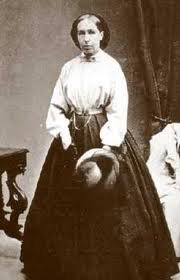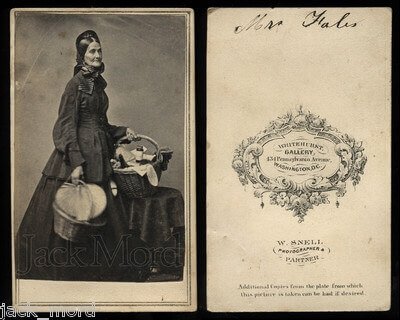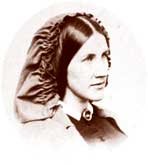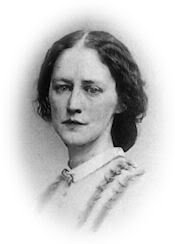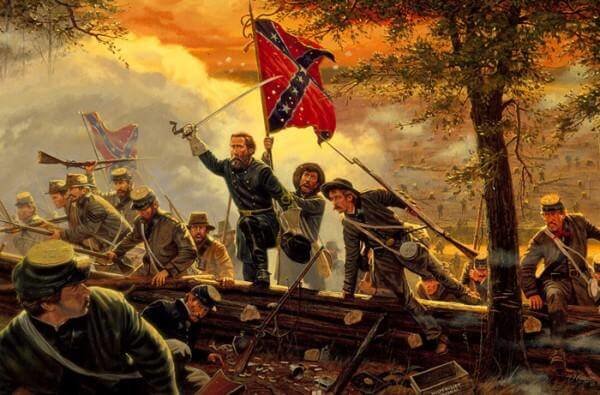Nurses on Hospital Ships in the Eastern Theater
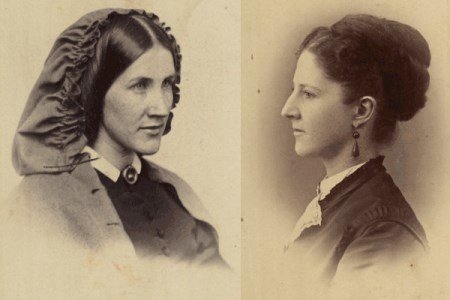
Image: Sisters Georgeanna Woolsey and Eliza Woolsey Howland
Served on hospital ships during the Peninsula Campaign in Virginia (March-July 1862)
During the Civil War, the Union Army often used ships to move sick and wounded soldiers from Southern battlefields to general hospitals in Northern cities. Initially, government-run hospital transport ships performed poorly. The need for improvement was especially demonstrated during the Peninsula Campaign when well-run volunteer hospital transport ships assisted the government ships to evacuate patients.
The Peninsula Campaign was a major Union operation in southeastern Virginia that lasted from March through July 1862. The plan was to travel up the Virginia peninsula by land and by river and capture the Confederate capitol at Richmond. USA General George B. McClellan was initially successful against the equally cautious CSA General Joseph E. Johnston, who was replaced by the aggressive General Robert E. Lee on June 1. Lee turned the subsequent Seven Days Battles (June 25 to July 1, 1862) into a humiliating Union defeat.
Hospital Transport Service
Early in April 1862, Frederick Law Olmstead, Secretary of the United States Sanitary Commission (USSC) asked the Quartermaster General to allow the Commission to use some of the transport steamboats of his department for the care of sick and wounded men. The USSC, a private agency that cooperated closely with the U.S. Army, would provide surgeons and supplies without any cost to the government.
The first such ship, the USS Daniel Webster, was assigned to the Commission, and after retrofitting the vessel, assembling supplies and hospital personnel, it reached the York River in Virginia on April 30, 1862. By mid-May, the Hospital Transport Service had seven ships working out of White House Landing on the York River and Harrison’s Landing on the James River, transporting casualties from General McClellan’s army of 100,000 men during a series of major battles.
Several women were assigned to each of these hospital transports by the Commission to care for the soldiers while they were being transported to large military hospitals in Washington, Philadelphia and New York. They took charge of the patients’ comfort and welfare – feeding the patients, dressing wounds, and ensuring that all had clean beds and clothing. Among the dozens of women who were in charge of the Hospital Transports for one or more of these trips were Amy Morris Bradley, Annie Etheridge and Helen Gilson.
The Sanitary Commission quickly created a system of waterways by which the wounded steadily traveled further North. Ships were assigned schedules and maximum patient allowances so as not to overtask the medical staff and place an unexpected burden on the receiving hospital. Thus a very predictable and organized system grew.
For example, on the Pamunkey River, a tributary of the York River, 19 hospital transports working on a fixed schedule could move 700 wounded a day. Thus, some 20,000 wounded per month could be moved from Virginia to hospitals in five states as far North as New York. A second inland force of about 16 hospital ships moved patients along riverways north to Missouri, Ohio, and Kentucky.

Image: Map of the Peninsula Campaign (March 17 – May 31, 1862)
The Peninsula Campaign of 1862 ended in a Union retreat. One of the last duties of the USSC Hospital Transport Service was when three of their ships were permitted to return under a flag of truce to City Point, Virginia and load 800 wounded men who had been taken prisoner in Richmond. Afterward, the Quartermaster Corps reclaimed the ships loaned to the Sanitary Commission. Improvements were made in the functioning of the government hospital transports, providing more care and comfort to the soldiers.
Four women remained at the headquarters of the Commission on the Peninsula until the final transfer of troops to Acquia Creek and Alexandria late in August 1862. Their duties consisted of nursing, preparing food for the patients, and dressing wounds in connection with the surgeons and medical students. Among these were Katharine Prescott Wormeley, Eliza Woolsey Howland, wife of Colonel Joseph Howland, and her sister Georgeanna Woolsey.
In her book The U. S. Sanitary Commission (1863), Katharine Prescott Wormeley recorded one of her experiences:
This was the general state of things at the time when the battle of Fair Oaks was fought, June 1, 1862. All the vessels of the Commission… were on the spot, and ready… No one, it is believed, can tell the story, as it occurred, of the next three days; no one can tell distinctly what boats they were, on which they lived and worked through those days and nights. They remember scenes and sounds, but they remember nothing as a whole; and, to this day, if they are feverish and weary, comes back the sight of men in every condition of horror, borne, shattered and shrieking, by thoughtless hands, who banged the stretchers against pillars and posts, dumped them anywhere, and walked over the men without compassion.
Imagine an immense river-steamboat filled on every deck: every berth, every square inch of room, covered with wounded men, even the stairs and gangways and guards filled with those who were less badly wounded; and then imagine fifty well men, on every kind of errand, hurried and impatient, rushing to and fro, every touch bringing agony to the poor fellows, whilst stretcher after stretcher comes along, hoping to find an empty place; and then imagine what it was for these people of the Commission to keep calm themselves, and make sure that each man, on such a boat as that, was properly refreshed and fed. Sometimes two or even three such boats were lying side by side, full of suffering and horrors.
Mary Morris Husband
During the Seven Days Battles on the Virginia Peninsula, Mary Morris Husband [link]’s son in the Union Army fell ill with malaria, and she was notified that he was near death. She hurried to his side, and after a great struggle and frequent relapses, he began to recover. In her thankfulness that his life had been spared, she devoted herself to the care of the sick and wounded of the army.
Mrs. Husband was on one of the hospital transports off Harrison’s Landing, when the Confederates bombarded it, but she stood her ground like a veteran and continued her work of caring for the sick as calmly as if in perfect safety. She was appointed Lady Superintendent of one of the hospital transports which bore the wounded and sick to New York. She made four trips on these vessels, and her faithful attention to the sick won for her the esteem of all on board.
Nurses on Hospital Ships in the Western Theater
Government Transport Ship North America
Eleanor C. Ransom of Indiana was nicknamed Mother because she was old enough to be the mother of most of the wounded boys she cared for, which makes her service all the more admirable. Her first assignment was in a Union hospital in Tennessee, and then to New Orleans where she went aboard the Government Transport Ship North America to nurse the wounded and sick Union soldiers during their voyage to hospitals in the North by sea.
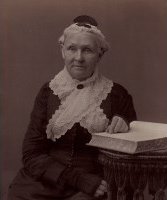 Image: Eleanor Mother Ransom
Image: Eleanor Mother Ransom
The hospital ship North America sank in heavy seas in the midst of a violent storm off the Florida coast on December 22, 1864. Ransom was summarily placed in a lifeboat, from which she witnessed many of her beloved patients drown during the sinking and could do nothing to save them. Of the 203 Union soldiers onboard, mostly from Illinois and New York regiments, many were too sick to move without aid; 194 died.
The lifeboat she was a passenger on was nearly swamped several times by huge waves, but she and a few others made it to the ship Libby and were rescued. Ransom was then sent to a hospital in New York City to recover from her ordeal.
While there, she received visits from relatives and friends of the soldiers who were lost on the North America who begged her for details about their loved ones who went down with the ship. Though it was difficult, Ransom never refused to tell what she recalled as mercifully as possible. She believed that it was her duty to ease the sorrows of those families as best she could.
On July 25, 1866, the United States Congress authorized a payment of $400 – which would be nearly $6000 today – to Ransom for her wartime services aboard the North America.
USS Red Rover
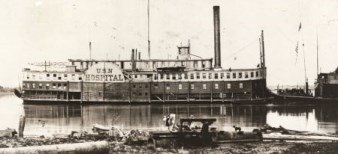
The Red Rover, a Confederate paddlewheel riverboat captured by the Union Army, was commissioned on December 26, 1862, and became the first hospital ship of the U. S. Navy. A side-wheel steamer of 786 tons, the Red Rover was converted into a hospital ship shortly after her capture. With the advice and assistance of the Western Sanitary Commission, the Red Rover had these conveniences:
bathrooms, laundry, elevator for the sick from the lower to the upper deck, amputating rooms, nine different water closets, gauze blinds to the windows to keep the cinders and smoke from annoying the sick, two separate kitchens for the sick and well, and two water closets on every deck.
Operating from Cairo, Illinois to New Orleans during 1863 and most of 1864, the Red Rover supported the Mississippi Squadron along the entire Mississippi River and played a major role in evacuating the wounded from such notable operations as the Yazoo River operations, the Siege of Vicksburg, the Fort Pillow attack and the Red River expedition.
Flag Officer Charles H. Davis of the Western Gunboat Flotilla wrote:
No one but those who have witnessed it can comprehend the sufferings to which our sick have been exposed by the absence of proper accommodations on board the gunboats and by the necessity for frequent and sometimes hasty change of place… When the ship was cleared for action… it was necessary to take down their cots and hammocks more than quickly into out of way and uncomfortable places. This must have been attended with pain and distress, if not positive injury. The arrival of the Red Rover will put a stop to all this…
During January 1863, she served with an expedition up the White River in Arkansas. During the battle that captured Fort Hindman, the Red Rover remained at the mouth of the river to receive the wounded. On her departure, she was fired on by Confederates and several large shots penetrated into the hospital area, but no one was hurt.
From February to the fall of Vicksburg on July 4, 1863, she cared for the sick and wounded of that campaign and supplemented her medical support of Union forces by provisioning other ships of the Mississippi Squadron with ice and fresh meat. She also provided burial details and sent medical personnel ashore when and where needed.
Red Rover continued her service along the Mississippi River, taking on sick and wounded and delivering medicine and supplies, until the fall of 1864. Although the nurses on board initially consisted of males, Sister Angela and three other Sisters of the Holy Cross offered their assistance and were transferred to the ship from an army hospital at Mound City, Illinois. Other female nurses served on the ship as well.
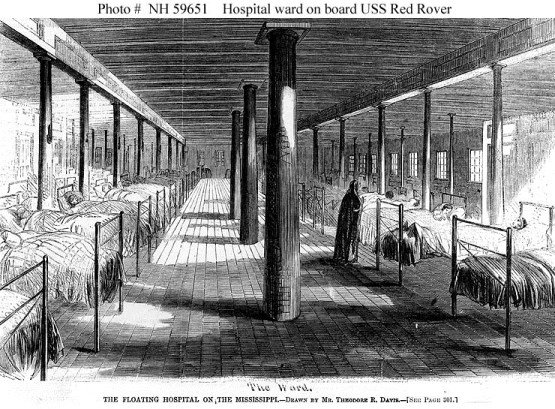
African American Women on the Red Rover
As with the white population, many African Americans served as nursing personnel during the war in both paid and volunteer capacities. The Navy enlisted five African American women as first class boys (and paid accordingly) and used them as nurses. The best known of these is Ann Bradford, an escaped slave from Tennessee who was enlisted in January 1863 and served until October 1864.
Stokes worked under the direction of the Sisters of the Holy Cross nuns aboard the USS Red Rover, becoming the first African American woman to serve on board a U.S. military vessel and one of the first women to serve as a nurse in the Navy. She stayed on active duty until October 1864 when she became totally exhausted and resigned her position.
Shortly after leaving the Navy in 1864, Ann married Gilbert Stokes, an African American man who had also been employed on the Red Rover. They moved to Illinois where Gilbert Stokes died in 1866. She remarried a man named George Bowman in 1867 and lived on a farm in Illinois. In the 1880s she applied unsuccessfully for a disability pension based on her marriage to Stokes.
She reapplied for a pension in 1890, stating that she had was suffering from heart disease. By this time she had learned to read and write and presented her own history, emphasizing that she was basing her claim on her own military service, not that of a husband. This was unique. The Navy certified that she had served eighteen months on the Red Rover and that she had a pensionable disability.
In 1890 Stokes was granted a pension of $12 a month, the amount awarded to former nurses at that time. She was the first woman in the United States to receive a pension for her own military service.
In December 1864, as the war on the Western waters waned, the Red Rover was assigned to her final station at Mound City, Illinois. When she was mustered out of naval service, her log showed that the Navy’s first hospital ship had provided treatment for 2,947 patients during her career.
SOURCES
Eleanor Mother Ransom
BlackPast.org: Ann Bradford Stokes
Commission of U.S. Navy’s First Hospital Ship
Project Gutenberg EBook of Woman’s Work in the Civil War
